1) Start each day with a warm breakfast. (Ahem. Congee, for example.)
2) Drink half a gallon or more of room-temperature or warm water a day.
3) Eat cooked greens with every meal.
I like this list because it's short, it's common-sense, and it's all about things to add--not take away--from your diet. Of course there are more steps to a complete, balanced, healthy approach to food. This is just a start (and for what it's worth, I think starting with a short and easy list is a lot more realistic and useful than attempting an immediate overhaul. In fact, I believe in celebrating each intermediate step towards optimal health, no matter how seemingly small. The thing is, being "healthy"--in quotes because that means so many different things for different people--is just a series of choices, every day. It's not like we get to some summit of healthy, or happy, or successful, or whatever good place and then we're just done and can throw a party. It's always work; we're always practicing; we're constantly making small steps. So celebrating that we've just started drinking more water or less diet soda is creating the good habit of cheering ourselves on throughout a long life built of tiny choices that serve us well. This is a long parentheses. More on celebrating the small another time).
So, okay. The three-step list is just a starting point, but it's a good one. I wrote about why you should eat a warm breakfast every day here. You've probably already been told that it's good to drink at least eight glasses of water per day, and there are, oh, about a billion reasons why. But greens with every meal? That's a lot of vegetables.
The short story is that cooked greens have so many benefits and so few drawbacks that it's almost a guarantee that putting lots of them in your diet will make you feel better. Of course, there are a few cases where this is not true: it is possible to overdose on greens, particularly for people with metabolic or cardiac disorders. Extremes, per usual, are not good--for all its goodness, two bunches of kale per day (which some people actually do eat, say, in smoothies) without variation or balance can actually result in significant thyroid imbalance.
Ok, so you're saying: I can eat something like caldo verde or sag paneer for lunch, and for dinner I could revamp my favorite burritos or make sure tonight's stir-fry is richly cruciferous. But vegetables in my breakfast? Seriously? Where, exactly, in my breakfast am I going to put those?
Oh, so glad you asked.
So you could do a frittata, or this gorgeous breakfast slab pie. You could top a slice of whole-grain bread with cottage cheese, spinach and an egg. Or--you could cook greens into your breakfast congee, like so:
Garlicky Greens Congee
Ingredients:
One and a half cups white jasmine rice
3 large cloves of garlic
Half a pound of cooking greens, like kale, collards, or spinach--I used rainbow chard here
A tablespoon of your favorite cooking oil
Four cups of chicken stock
Water
How to:
Thoroughly rinse your rice, greens, and garlic.
Trim the tough stems off your greens, and mince them finely.
 |
| Like so. |
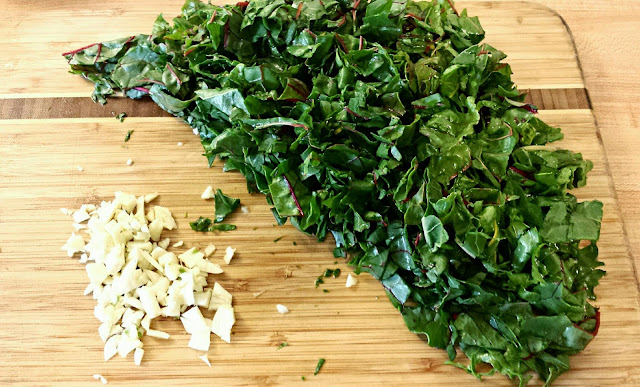 |
| Like so. |
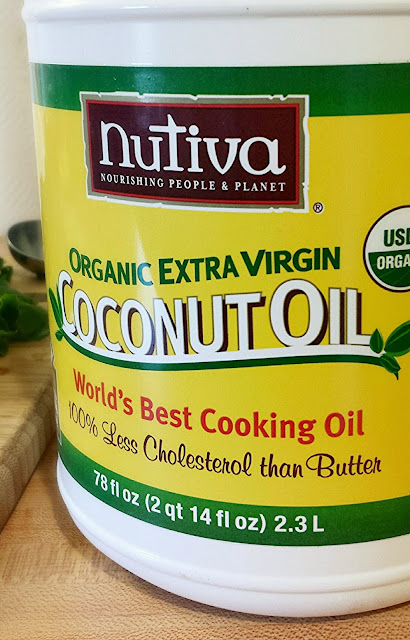 |
| This is my favorite cooking oil for this kind of thing. |
When the oil is hot, add the minced garlic; sautee till just golden, then add the minced greens. You want to keep this stuff moving in the pan; it's easy to burn the garlic, and burnt garlic means you'll have to start all over, which would be a bummer.
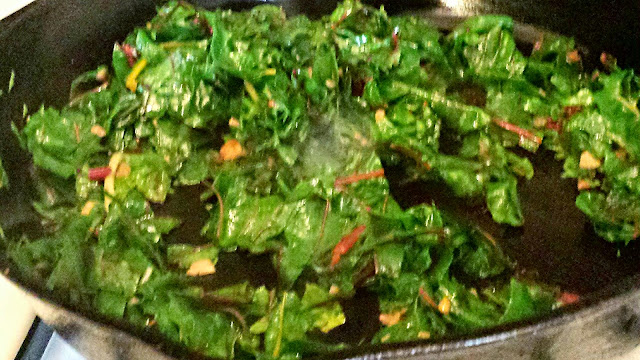 |
| If you can take a non-blurry photo of your greens, YOU ARE NOT MOVING THEM AROUND ENOUGH. |
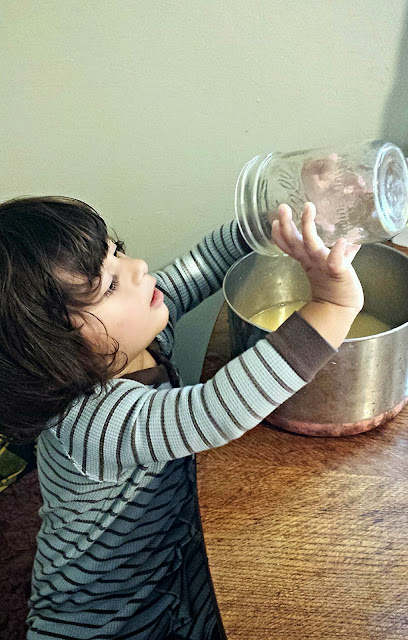 |
| And cop a helper if you can. |
Bring the whole dealio to a rolling boil.
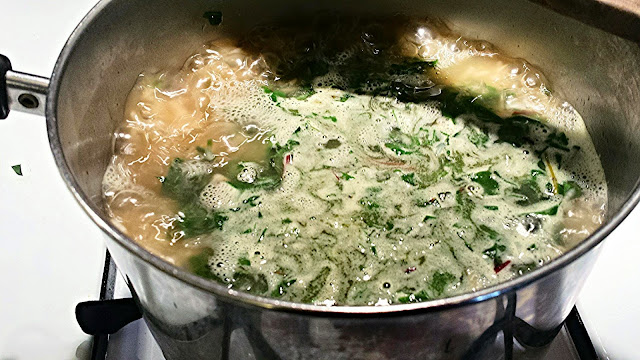 |
| Like so. |
Then reduce the heat to medium-low. You want a lively simmer. Stir frequently, making sure you are reaching the bottom of the pot with your spoon to avoid any burnt bits.
After ten minutes, my congee looked like this:
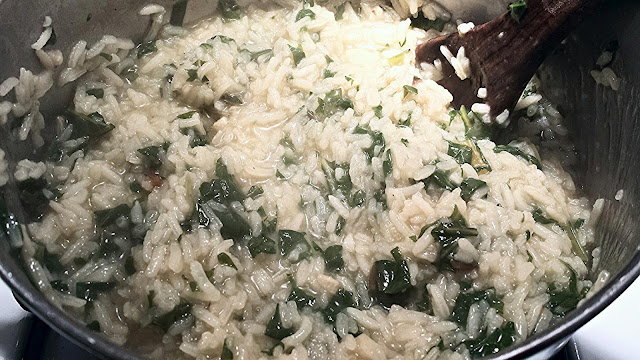 |
See how the stock is almost fully absorbed, but the rice grains are still largely separate and have their individual borders fully intact? If your congee looks like this at any point, it's your cue to add more liquid. I added another two cups of water here.
After another fifteen minutes--twenty-five minutes total--my congee looked liked this:
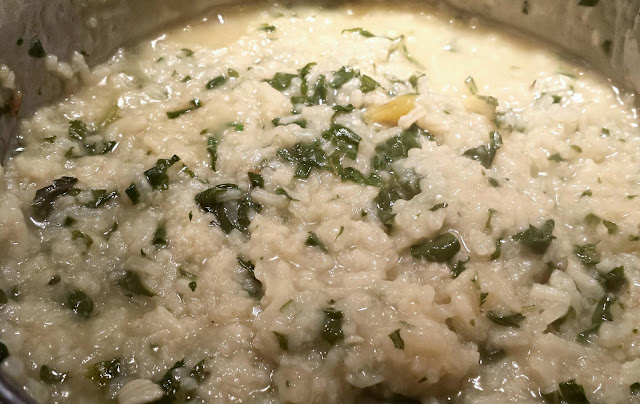 |
Now the borders of the rice are a lot less distinct, and the water I added has also been largely absorbed. At this point, I'm calling it done. (You can totally cook the congee for longer, and the consistency will just get smoother and smoother. It's a personal call. Do what you're gonna do. There's no judgment here.)
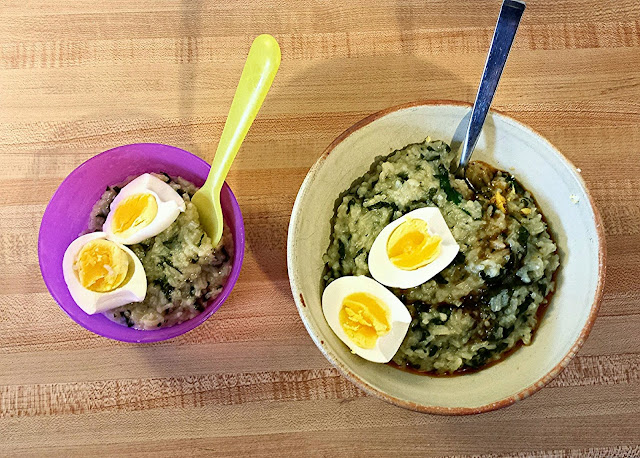 |
| Mama and baby breakfasts |
I splashed a little hot-chili-pepper sesame oil and some organic tamari on my bowl, and topped both my serving and Kamal's with one of Adam's perfect-every-time boiled eggs.
So good! And so green. Enjoy!